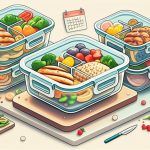Pregnancy is a remarkable journey, but it often comes with its share of aches and pains. As your body changes to accommodate your growing baby, you might experience discomfort in your back, hips, pelvis, and other areas. If you’re seeking a safe, drug-free way to alleviate these discomforts, kinesiology tape might be a helpful addition to your pregnancy care routine. This guide provides step-by-step instructions for applying kinesiology tape, explains its potential benefits and risks, and offers additional tips for a more comfortable pregnancy.
Understanding Kinesiology Tape During Pregnancy
Kinesiology tape is a stretchy, elastic therapeutic tape that’s applied to the skin. It’s thought to work by gently lifting the skin, which may create microscopic space beneath it. This is theorized to improve blood and lymphatic circulation, potentially reducing inflammation and easing pressure on pain receptors. The tape’s elasticity can also provide gentle support to muscles and joints, similar to a light compression wrap.
Is Kinesiology Tape Safe During Pregnancy?
While kinesiology tape is generally considered safe for pregnancy, it’s essential to consult your doctor or midwife before using it, especially if you have any pre-existing health conditions or skin sensitivities. They can assess your specific situation and advise you on the best course of action.
How Does Kinesiology Tape Work?
The exact mechanism of how kinesiology tape works is still being researched, but the prevailing theory suggests it creates a biomechanical lift that decompresses the tissues beneath the skin. This may influence pain receptors, fluid dynamics, and muscle function. Further research is still needed to fully understand these effects.
What Can Kinesiology Tape Help With During Pregnancy?
Kinesiology tape may offer relief from various pregnancy-related discomforts, including:
- Lower Back Pain: Provides support and stability to the lower back muscles.
- Round Ligament Pain: Reduces strain on the round ligaments, alleviating sharp, shooting pains in the groin area.
- Pelvic Girdle Pain (PGP): Supports the pelvic joints, improving stability and easing pain.
- Swelling in Feet and Ankles: May help reduce swelling by potentially improving lymphatic drainage.
- Sciatica: May alleviate pain by decompressing the sciatic nerve.
- Carpal Tunnel Syndrome: Can support the wrists and reduce pressure on the median nerve.
It’s important to remember that while many women report experiencing relief with kinesiology tape, scientific evidence supporting its effectiveness for all these conditions is still emerging.
Applying Kinesiology Tape: A Step-by-Step Guide
Proper application is key to maximizing the potential benefits of kinesiology tape. While this guide provides general instructions, consulting with a physical therapist or other qualified healthcare professional is highly recommended for personalized guidance. They can tailor the application to your specific needs and ensure you’re using the correct techniques.
- Prepare Your Skin: Cleanse the area with mild soap and water, ensuring it’s completely dry and free of lotions, oils, or powders. This allows for proper adhesion.
- Measure and Cut: Measure the necessary length of tape and cut it, rounding the edges to prevent peeling.
- Anchor the Tape (Optional): For some applications, an “anchor” is recommended. This is a small piece of tape applied without stretch, which provides an anchor point for the support strips.
- Apply the Support Strips: These strips provide lift and support. The amount of stretch you apply depends on the target area and your specific needs. Your healthcare provider can guide you on the appropriate level of stretch. Avoid stretching the ends of the tape, as these also serve as anchors.
- Activate the Adhesive: Rub the applied tape to activate the heat-sensitive adhesive and ensure a secure bond.
Visual Aids: Search online for videos and images demonstrating proper kinesiology taping techniques for specific areas of the body. Many reputable physical therapy clinics and organizations offer online resources.
Specific Application Examples (Consult a professional for personalized advice):
| Discomfort | Taping Technique |
|---|---|
| Round Ligament Pain | Belly Belt/Hip Anchors to Pubic Bone |
| Lower Back Pain | Support Sling Across Lower Back |
| Rib Pain | Under-the-Bust Support along Rib Cage |
| Pelvic Pain | Varies – Professional Application Recommended |
| Abdominal (Belly) Pain | Varies – Professional Application Recommended |
Potential Side Effects and Precautions
While generally safe, some individuals may experience:
- Skin Irritation: Redness, itching, or a rash. Remove the tape immediately if this occurs. A hypoallergenic tape or skin barrier cream might help prevent these reactions.
- Allergic Reactions: Some people are allergic to the adhesive. A patch test on a small area of skin is recommended before applying the tape to larger areas.
Important Precautions:
- Avoid Taping Over the Belly Button: This area is particularly sensitive during pregnancy.
- Consult Your Doctor: If you experience any unusual pain, discomfort, or skin reactions, contact your doctor immediately.
- Proper Application is Crucial: Incorrect application may reduce effectiveness or even be counterproductive.
Kinesiology Tape: Beyond Pain Relief
In addition to pain management, kinesiology tape may offer other potential benefits during pregnancy:
- Improved Posture: The gentle support can help maintain better posture as your belly grows.
- Muscle Support: Provides support to overstretched abdominal and back muscles.
- Enhanced Proprioception: May increase body awareness, which can improve balance and coordination.
- Potential Improvement in Lymphatic Drainage: May help reduce swelling in the extremities.
Integrating Kinesiology Tape into Your Pregnancy Care
Kinesiology tape is just one tool in your pregnancy comfort toolkit. Combine it with other beneficial practices like:
- Prenatal Exercises: Gentle exercises can strengthen muscles and improve circulation.
- Supportive Garments: Maternity belts and support stockings can provide additional support and comfort.
- Rest and Relaxation: Prioritize getting enough rest and incorporating relaxation techniques into your routine.
- Hydration: Staying well-hydrated is essential for overall health during pregnancy and can help reduce swelling.
The Bottom Line
Kinesiology tape may offer a safe and effective way to manage common pregnancy discomforts. However, it’s essential to consult with your healthcare provider before using it, especially if you have any underlying health conditions. They can help you determine if kinesiology tape is appropriate for you and guide you on proper application techniques. Remember, every pregnancy is unique, and what works for one person might not work for another. Listen to your body, prioritize your well-being, and always seek professional medical advice when needed.
- How Glass Bento Box Containers Make Meal Prep Easier - December 18, 2025
- Why Glass Boxes for Lunch Are Trending for Meal Prep - December 17, 2025
- Bento Box Glass Offers Practical, Eco-Friendly Meal Storage - December 16, 2025










